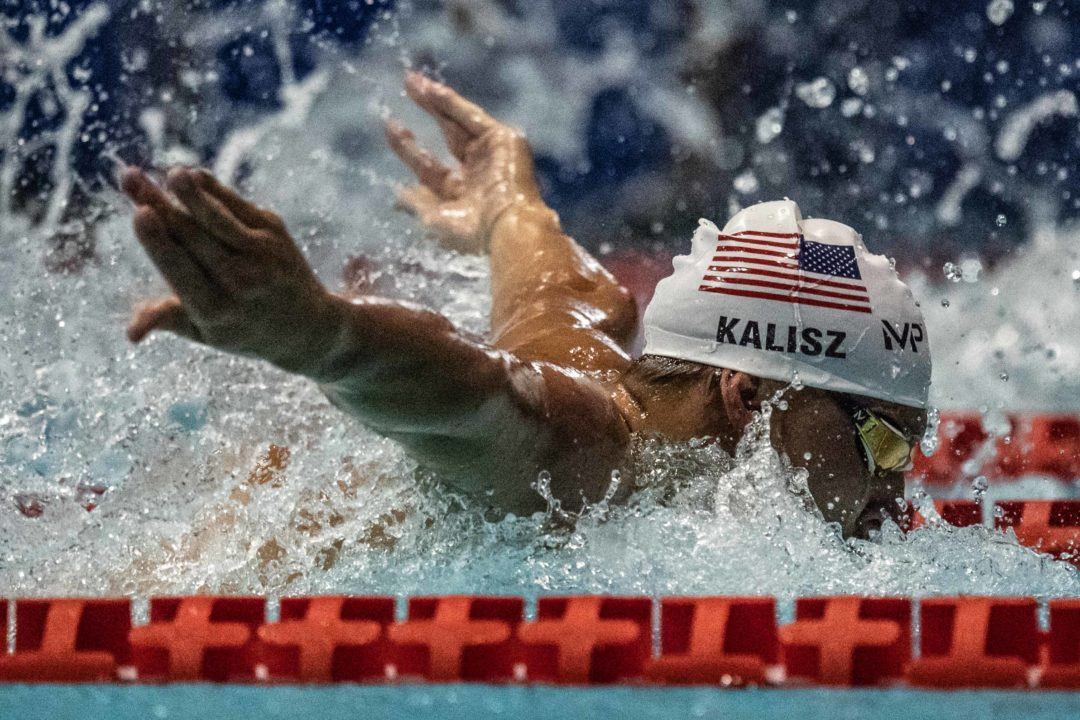Courtesy of Gary Hall Sr., 10-time World Record Holder, 3-time Olympian, 1976 Olympic Games US Flagbearer and The Race Club co-founder.
One of the most fascinating aspects of our sport is that when it comes to technique, swimming is not a one-size-fits-all sport. I am amazed by how many great athletes can use different swimming techniques to achieve similar results. One of the biggest challenges of swimming coaches is to figure out which swimming technique works best for a given swimmer in a given event. Not an easy task.
I have always regarded butterfly and breaststroke as the two most kick-dependent strokes. If you don’t have a strong kick in butterfly or breaststroke, then you don’t have much going for you in either stroke. Yet two extremely fast butterfliers, Laszlo Cseh of Hungary and Chase Kalisz of the USA use a similar fly technique that does not utilize the kick in the same way we normally see it being used by world-class butterfliers.
There are four propulsive kicks available to a swimmer in a butterfly stroke cycle; two down kicks and two up kicks. The two down kicks should be the most propulsive of the four kicks. The first down kick occurs when the hands are pulling through the water (near the abdomen) and the second down kick occurs as the hands enter the water after the recovery. To take full advantage of both down kicks, we teach swimmers to snap the feet down hard on each one. That is not what Lazlo and Chase do, however.
On their first down kick, as their hands are pushing back through the pull, both swimmers stop their down kicks right as their legs reach the horizontal position. They then point their toes backward like a ballerina. That is like stopping a baseball swing in mid-swing, a so-called check swing. Not going to get much power that way. In other words, they sacrifice a lot of propulsion on the first down kick. They hope that propulsion they generate from their strong pull while using a low-drag position with their feet and legs will keep them in the game.
When it comes to their second down kick, that is an entirely different story. Since they received a little rest from not working the first down kick, they put all of their energy into that second down kick. At that moment, that is the only propulsive force. They couple energy ferociously using their arms, shoulders, and head to make that second kick even stronger. They recover the arms vertically over the water (so gravity helps bring the arms down harder). They snap their heads down aggressively after the breath. The result is a tremendous surge forward after the second down kick that gets them back in the race, if not ahead.
While I submit that using this technique may not enable a swimmer to excel at the 50-meter fly, Laszlo managed to swim a 50.8 long course 100 fly using it. He also swam a 1:52.7 in the 200-meter long course fly. Chase swam an extremely respectable 1:54.7 200-meter long course fly using the same technique.
This does not mean that neither swimmer has a fast dolphin kick. They both do. They just choose to use it more selectively, putting all of their eggs in one basket, so to speak, by hammering the second down kick. For Chase, better known for his excellence in the individual medley, using this fly technique may save his legs more for the important three legs to follow in the IM. Not a bad strategy.
Using this butterfly technique is yet another testament to the power of strong coupling motions. The velocity they achieve on the second down kick, coupled with their arm recovery, shoulders, and head motion is tremendous. More than likely, each of these great swimmers learned this technique on their own. Regardless, it works well for them.
As coaches, we need to be open-minded when it comes to swimming technique. After all, the best technique for each one of your swimmers may be as yet undiscovered.
What are you doing to test or experiment with different techniques for your swimmers?
Yours in swimming,
Gary Sr.
Like The Race Club on Facebook
Follow The Race Club on Instagram
Follow The Race Club on Twitter
Connect to The Race Club / Gary Hall Sr. on Linkedin
THE RACE CLUB
Because Life is Worth Swimming, our mission is to promote swimming through sport, lifelong enjoyment, and good health benefits. Our objective is for each member of and each participant in The Race Club to improve his or her swimming performances, health, and self-esteem through our educational programs, services and creativity. We strive to help each member of The Race Club overcome challenges and reach his or her individual life goals.
The Race Club provides facilities, coaching, training, technical instruction, video, fitness and health programs for swimmers of all ages and abilities. Race Club swim camps are designed and tailored to satisfy each swimmer’s needs, whether one is trying to reach the Olympic Games or simply improve one’s fitness. Our programs are suitable for beginner swimmers, pleasure swimmers, fitness swimmers, USA swimming or YMCA swimmers, or triathletes; anyone who wants to improve swimming skills. All of our Race Club members share an enjoyment of being in the water and use swimming to stimulate a more active mind and body.


